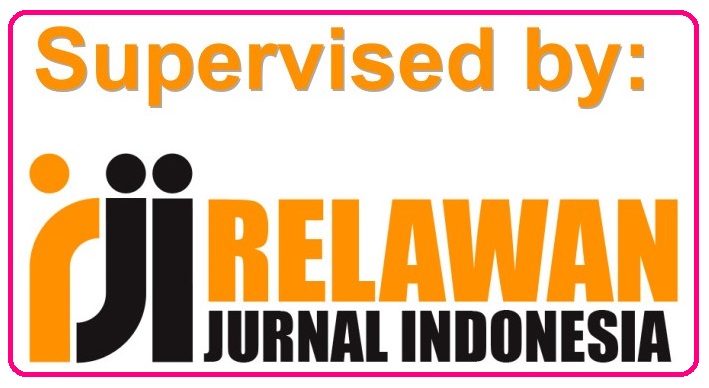Discursive Constructions of Communicative Rationality in Kenyan Presidential Election Petitions of 2022 at the Supreme Court of Kenya
DOI:
https://doi.org/10.31849/elsya.v5i3.14010Keywords:
Communicative Rationality, Illocutionary Focus, Presidential Election Petitions, Transparency, Integrity, Lack of FairnessAbstract
How communicative rationality is constructed and shared among interlocutors in a court in the seeking of justice, given the background of distrust in the Kenyan Presidential Election context, gave attention to this study. The study investigated the construction of communicative rationality in the courtyard. The study assessed the types of illocutionary forces and their discursive legal practices and determined how interlocutors redeem the illocutionary logic in the courtyard. A documentary review of the written judgment of Ruto against Odinga in the presidential election of 2022 was used as the data collection method. The analytical frameworks involved Austin's (1962b) Speech Act theory and Searle and Vanderveken's (1985) illocutionary commitments. The findings showed that petitioners chose illocutionary forces to downgrade respondents' claims. The discursive nature of their legal practices was characterized by a lack of fairness, transparency, and integrity of IEBC and its Chairperson. Respondents used illocutionary forces, including denials, for face protection and repair. Their discursive legal practices were characterized by compliance, transparency, and accountability to win the Court's decision. Petitioners and respondents used much propositional content, modes of achievement, and preparatory conditions to construct their validity claims. In achieving justice, the group of Judges must consider interlocutors' presentations of credible statements of truth and acceptable normative statements of legal practices. A group of Judges needs to take precautions against the interlocutors' tricks and manipulation of the Constitution for effective decision-making.
References
Archer, W. (2019). God and Mr. Wells. BoD–Books on Demand.
Austin, J. L. (1962a). Horn to do Things with Words. Oxford University Press Oxford.
Austin, J. L. (1962b). Speech acts. Oxford.
Baranov, V., Bhalotra, S., Biroli, P., & Maselko, J. (2020). Maternal depression, women’s empowerment, and parental investment: Evidence from a randomized controlled trial. American Economic Review, 110(3), 824–859.
Cerović, M. (2016). When suspects ask questions: Rhetorical questions as a challenging device. Journal of Pragmatics, 105, 18–38.
Cousineau, P., & Lachine, B. (2023). Enhancing Boofuzz Process Monitoring for Closed-Source SCADA System Fuzzing. 2023 IEEE International Systems Conference (SysCon), 1–8.
Cutter, S. L., Barnes, L., Berry, M., Burton, C., Evans, E., Tate, E., & Webb, J. (2008). A place-based model for understanding community resilience to natural disasters. Global Environmental Change, 18(4), 598–606.
Freedgood, L. A. (2002). Voicing the evidence: The pragmatic power of interpreters in trial testimony. Boston University.
Gardiner, M. E. (1991). The dialogics of critique: MM Bakhtin and the theory of ideology. [PhD Thesis]. University of York.
Gilks, K. (2010). Is the Brown and Levinson (1987) model of politeness as useful and influential as originally claimed? An assessment of the revised Brown and Levinson (1987) model. INNERVATE Leading Undergraduate Work in English Studies, 2, 94–102.
Goffman, E. (1967). International ritual: essays on face-to-face behavior. New York: Double Day Anchor Books.
Habermas, J. (1982). A reply to my critics. Springer.
Habermas, J. (1989). Towards a communication-concept of rational collective will-formation. A thought-experiment. Ratio Juris, 2(2), 144–154.
Habermas, J. (1996). Between Facts and Norms, W. Rehg translation. Polity, Cambridge.
Hautli-Janisz, A., Kikteva, Z., Siskou, W., Gorska, K., Becker, R., & Reed, C. (2022). Qt30: A corpus of argument and conflict in broadcast debate. Proceedings of the 13th Language Resources and Evaluation Conference, 3291–3300.
Hesse, M. (1982). Revolutions and Reconstructions in the Philosophy of Science.
Hirschkop, K. (1999). Mikhail Bakhtin: An aesthetic for democracy. OUP Oxford.
Johnson, A., & Coulthard, M. (2010). Introduction Current debates in forensic linguistics. In The Routledge handbook of forensic linguistics (pp. 29–44). Routledge.
Katermina, V. (2017). Linguocultural characteristics of English mass-media neologisms. US-China Foreign Language, 15(10), 617–624.
Keya, A. (2019). How Some Witnesses Have Vied for Floor Control in Tanzanian Higher Courts. Tanzania Journal for Population Studies and Development, 24(1&2).
Khoyi, A. M., & Behnam, B. (2014). Discourse of Law: Analysis of cooperative principles and speech acts in Iranian Law Courts. Asian Journal of Education and E-Learning, 2(4).
Kiyama, S., Tamaoka, K., & Takiura, M. (2012). Applicability of Brown and Levinson’s politeness theory to a non-western culture: Evidence from Japanese facework behaviors. Sage Open, 2(4), 2158244012470116.
Komter, M. L. (1994). Accusations and defences in courtroom interaction. Discourse & Society, 5(2), 165–187.
Kone, N. (2020). Speech acts in UN treaties: A pragmatic perspective. Open Journal of Modern Linguistics, 10(6), 813–827.
Koome, M. (2022). Keynote address by Hon Justice Martha Koome, EGH, Chief Justice and President of the Supreme Court of Kenya, during the launch of Attorney General Emeritus, Prof Githu Muigai’s book, 15th July 2022: Book title: Power, politics & law: Dynamics of constitutional change in Kenya, 1887-2022. Kabarak Journal of Law and Ethics, 6(1), 223–225.
Kovkina, Y., Aloyan, M., & Avoyan, L. (2022). Relevance of Forensic Linguistic Speech Analysis in Criminal Cases Regarding Threat Incrimination. Theory and Practice of Forensic Science and Criminalistics, 28(3), 98–108.
Kravchenko, N., & Blidchenko-Naiko, V. (2020). Multifaceted linguistic pragmatics of justification (Ukrainian speech-based study). Open Journal of Modern Linguistics, 10(1), 11–22.
Magenau, K. S. (2003). Jury duty: Competing legal ideologies and the interactional negotiation of authority in jury deliberation. Georgetown University.
Makomelo, L. M. (2022). Participation of Women in Conflict Resolution: Case of Turkana County in Kenya; 1990 TO 2015 [PhD Thesis]. Kenyatta University.
Matoesian, G. M., & Coldren JR, J. R. (2002). Language and bodily conduct in focus group evaluations of legal policy. Discourse & Society, 13(4), 469–493.
Merton, R. K. (1972). Insiders and outsiders: A chapter in the sociology of knowledge. American Journal of Sociology, 78(1), 9–47.
Putri, R. S., Purwanto, A., Pramono, R., Asbari, M., Wijayanti, L. M., & Hyun, C. C. (2020). Impact of the COVID-19 pandemic on online home learning: An explorative study of primary schools in Indonesia. International Journal of Advanced Science and Technology, 29(5), 4809–4818.
Roznai, Y., & Munabi, O. (2022). Stability of Constitutional Structures and Identity Amidst Political Bipartisanship: Lessons from Kenya and Israel. Available at SSRN.
Searle, J. R. (1979). Intentionality and the use of language. In Meaning and Use: Papers Presented at the Second Jerusalem Philosophical Encounter April 1976 (pp. 181–197). Springer.
Searle, J. R., & Searle, J. R. (1969). Speech acts: An essay in the philosophy of language (Vol. 626). Cambridge university press.
Searle, J. R., & Vanderveken, D. (1985). Foundations of illocutionary logic. CUP Archive.
Searle, J. R., Vanderveken, D., & Willis, S. (1985). Foundations of illocutionary logic. CUP Archive.
Skilton, A. (2017). Assertive questions in Máíhĩki. Journal of Pragmatics, 109, 121–136.
TieRsma, P. (2010). The Origins of legal language.
Ward, G., Birner, B. J., & Kaiser, E. (2013). Pragmatics and information structure.
Zyubina, I. A., Matveeva, G. G., Zheltukhina, M. R., Slyshkin, G. G., & Shevchenko, A. V. (2017a). Forensic prosecutor’s speech as a speech genre. XLinguae, 10(3), 312–323.
Zyubina, I. A., Matveeva, G. G., Zheltukhina, M. R., Slyshkin, G. G., & Shevchenko, A. V. (2017b). Forensic prosecutor’s speech as a speech genre. XLinguae, 10(3), 312–323.
Downloads
Published
Issue
Section
License
- Author retains the copyright and grants Elsya Journal the right of first publication of the work simultaneously licensed under the Creative Commons Attribution-ShareAlike 4.0 License that allows others to share the work with an acknowledgment of the work's authorship and initial publication in this journal
- The author is able to enter into separate, additional contractual arrangements for the non-exclusive distribution of the journal's published version of the work (e.g., post it to an institutional repository or publish it in a book) with the acknowledgment of its initial publication in this journal.
- The author is permitted and encouraged to post his/her work online (e.g., in institutional repositories or on their website) prior to and during the submission process, as it can lead to productive exchanges, as well as earlier and greater citation of the published work (See The Effect of Open Access).












 Elsya Journal is licensed under
Elsya Journal is licensed under 